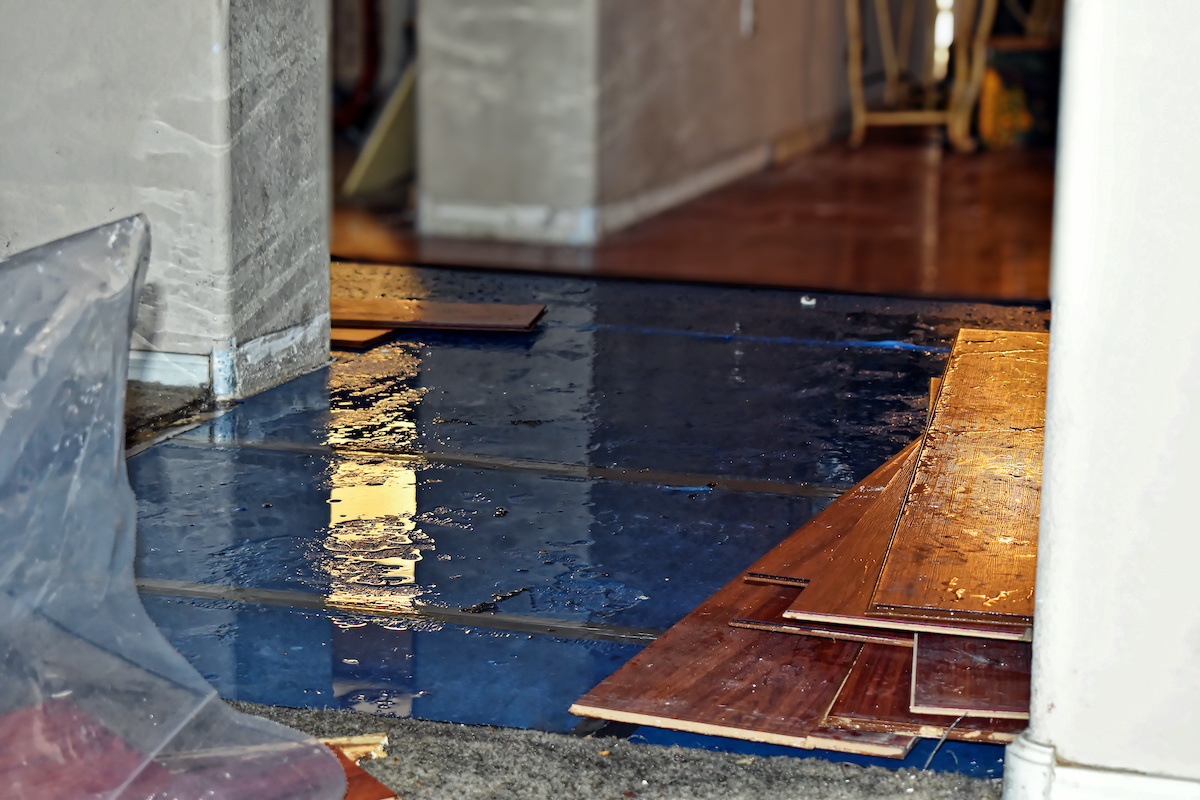Table of Contents
Water damage is one of the most common and costly issues homeowners face. While most people know to check their roofs or basements for signs of water intrusion, there are several unexpected places where water damage can occur. Ignoring these hidden spots can lead to serious structural issues, mold growth, and costly repairs. Here are five unexpected places where water damage can strike in your home and how to prevent it.

1. Behind Your Walls
Water damage behind walls often goes unnoticed until it becomes severe. This can occur due to hidden pipe leaks, condensation, or seepage from the exterior. Over time, the trapped moisture can weaken drywall, lead to mold growth, and compromise your home’s structural integrity. The tricky part is that you might not realize there’s an issue until it has already caused significant damage.
How to Prevent It:
- Regularly inspect for discoloration, musty odors, or bubbling paint on your walls.
- Consider installing a moisture meter to detect hidden dampness.
- Address any plumbing issues promptly, and ensure exterior walls are properly sealed and insulated to prevent seepage.
- Monitor water usage in your home. Unexplained increases in your water bill could indicate hidden leaks.
2. Underneath Appliances
Appliances like dishwashers, washing machines, and refrigerators are prime culprits for hidden water damage. These appliances often have hidden water lines and connections that can develop small leaks over time. Leaks from these appliances can seep into the floor and subfloor, causing significant damage that may require extensive repairs.
How to Prevent It:
- Check hoses and connections on appliances for signs of wear or leaks at least twice a year.
- Use water leak sensors under major appliances to alert you to potential leaks.
- Perform routine maintenance to ensure appliances are in good working condition.
- When installing new appliances, ensure that the connections are secure and professionally done.
3. Inside Cabinets and Under Sinks
The dark, enclosed spaces inside cabinets and under sinks make them highly susceptible to unnoticed water damage. A slow drip from a pipe, a leaking faucet, or even condensation can lead to warped wood, mold, and even pest infestations over time. These areas often remain unchecked, allowing damage to progress unnoticed.
How to Prevent It:
- Regularly check under sinks for dampness, mold, or unusual odors.
- Use waterproof liners inside cabinets to protect the wood from spills or leaks.
- Tighten loose plumbing connections and replace damaged seals immediately.
- Install motion-activated lights inside cabinets for better visibility during inspections.
4. Your HVAC System
Your heating, ventilation, and air conditioning (HVAC) system can be another unexpected source of water damage. Condensation from the system, clogged drain lines, or a malfunctioning drip pan can lead to water pooling and leaking into your home. Over time, this can cause damage to ceilings, walls, and floors.
How to Prevent It:
- Schedule regular HVAC maintenance to ensure the system is functioning properly and efficiently.
- Clear drain lines and check for clogs regularly.
- Inspect the drip pan for cracks or overflowing water. If necessary, replace it promptly.
- Consider installing a safety switch on your HVAC unit to shut it off if water levels in the pan become too high.
5. Around Windows and Doors
Water damage around windows and doors often results from poorly sealed frames, cracks in the caulking, or gaps between the frame and the wall. Rainwater can seep into these small gaps, causing damage to the surrounding walls, flooring, and even the foundation over time. The damage can escalate quickly if left unaddressed.
How to Prevent It:
- Check and reseal window and door frames annually with high-quality caulk.
- Ensure proper drainage around your home to direct water away from these areas.
- Install weather stripping to protect against leaks during heavy rain or extreme weather.
- Regularly inspect window sills and door thresholds for signs of water pooling or deterioration.
Why It’s Important to Act Quickly
Water damage can escalate rapidly if left untreated. Besides the immediate effects on your property, prolonged exposure to moisture can lead to health risks from mold and mildew. Mold spores can spread throughout your home and pose significant health risks, especially for those with respiratory conditions. Addressing water damage promptly helps protect your home and saves you from costly repairs down the line.
Conclusion
Water damage doesn’t just occur in obvious places like roofs and basements. These five unexpected areas highlight the importance of regular maintenance and vigilance. By knowing where to look and taking preventive measures, you can protect your home and ensure it remains a safe, comfortable space for years to come.
If you suspect water damage in your home, don’t wait to take action. Contact us on (305) 894-4343 for professional water damage restoration to assess and address the issue before it worsens. Early intervention can save you time, money, and stress, ensuring your home remains your sanctuary.


